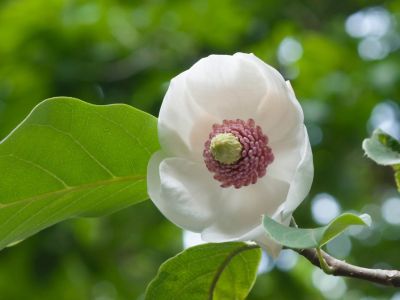Oyama Magnolia Tree
The Oyama magnolia tree (Magnolia sieboldii) is a large flowering shrub native to the understory of forests in Japan, China, and Korea. One of its common names is the Korean magnolia. It is a vase shaped shrub with gray bark, coarse textured oval leaves, and lovely flowers. The blossoms appear in late spring, as fragrant magnolia flowers that can grow to four inches (10 cm.) in diameter. They are followed by showy pink fruit with bright scarlet seeds.
Oyama Magnolia Information
If you are considering growing Oyama magnolia, you’ll need to know a little about the tree’s growth habit. This magnolia grows quite rapidly after transplant, shooting up 24 inches (60 cm.) or more in one year. It begins flowering while it is still young and grows occasional flowers during the summer, even after its normal six week season. The fruit are about the size of large eggs but a deep, bright pink. As they mature, they split open to reveal scarlet seeds. In autumn, the oblong leaves turn gold before they fall.
Oyama Magnolia Growing
Care for Korean magnolias is not difficult if sited correctly. One of the most important elements of care for this magnolia shrub is rich, well-drained soil. These magnolias prefer deep, moist, acidic soil that is supplemented with leaf mold or peat moss. Oyama magnolia information tells us the tree does best when planted in USDA hardiness zones 6 through 9 in full sun or partial shade. Even in the correct zone this magnolia tree is sensitive. You’ll need to protect both the leaves and flowers from weather extremes such as hot sun, gusty winds, and winter frost. Regular care includes keeping the soil moist all year long. These trees can’t tolerate either dry or wet soil. If you mulch the root zone it will help to regulate soil temperature and moisture.
